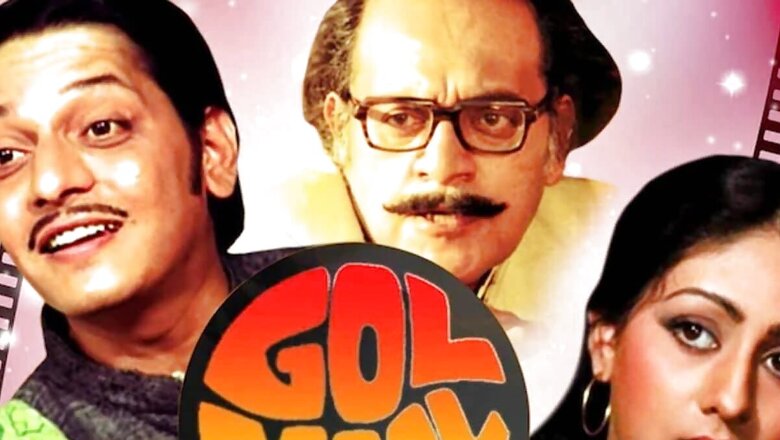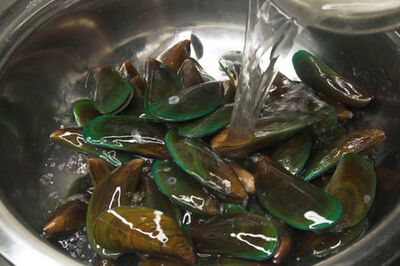
views
Many Hindi cinema lovers have met Anand Sehgal (Rajesh Khanna), a young man suffering from a rare form of cancer, in Hrishikesh Mukherjee’s Anand. Anand knows he has a few months to live, but that awareness hasn’t dampened his desire to spread joy and smiles. When he tells Babumoshai (Dr Bhaskar Banerjee played by Amitabh Bachchan) “Babuji, zindagi badi honi chahiye, lambi nahi”, a viewer cannot help thinking that Anand’s death is around the corner. Sensitively co-written and directed by Hrishida, as he was popularly called, Anand is the memorable titular character of an unforgettable film.
A creator with the rare ability to tell all kinds of stories in relatable films, Hrishida’s comedy Gol Maal with its gut-busting moments is one of the highlights of his career. Who can forget the moustache-obsessed and deeply traditional Bhavani Shankar (Utpal Dutt), who tells his daughter, “Tumhari shaadi usse nahin hogi jise tum prem karti ho … tumhari shaadi usse hogi jise main prem karta hoon.”? Such comic gems (dialogues by Dr Rahi Masoom Raza) are sprinkled liberally throughout the film, making it an entertaining experience of a kind seldom seen in Hindi cinema.
Born on September 30, 1922, in Kolkata, Hrishida passed away on August 27, 2006. A University of Calcutta chemistry graduate, he taught science and mathematics for some time before opting for filmmaking as a profession. An unusual career change for sure; however, his decision to take up film editing and camera work was his first step in the world of moving pictures. He began working in BN Sircar’s New Theatres in Kolkata in the late 1940s before going to Mumbai in 1951. He was associated with the legendary filmmaker Bimal Roy, for whom he worked in films like Devdas and Do Bigha Zameen.
Hrishida helmed 42 films in his four-decade-long filmmaking career, although he made his last film, the comedy Jhooth Bole Kauwa Kate (1998) ten years after his penultimate film Namumkin (1988), a mystery. He told his stories with a touch of simplicity, and the focus, often on the middle class, appealed to a significant section of film viewership.
A look at his career graph is a reminder of his versatility as a maker. The list of fine Hrishida films is a long one, including Anupama (1966), Satyakam (1969), Guddi (1971), Anand (1971), Bawarchi (1972), Abhimaan (1973), Namak Haraam (1973), Chupke Chupke (1975), Gol Maal (1979), Khubsoorat (1980), Bemisaal (1982) and Rang Birangi (1983).
Superstar when he acted in Anand, Rajesh Khanna played a man who could have been your neighbour in the film. Interestingly, Khanna’s sartorial statement with the short kurta in Anand became a part of street fashion during that period. A tragedy told with the filmmaker’s famous lightness of touch, Anand conveyed a philosophical message without having a preachy tone. A human being must not discard his/her love for life even if the person is aware that death isn’t far away.
Abhimaan focusing on a married couple (Jaya Bachchan and Amitabh Bachchan) highlighted the fact of ego, a devil that torments some human beings in real life. Namak Haraam, which Amitabh Bachchan fans often talk about for his performance in the meaty supporting role of a factory owner’s son, reminded the viewer that class divide does exist. Khubsoorat’s depicted the strong woman in a male-dominated film industry, whether it was Rekha in the central role of a lively, outspoken and somewhat rebellious young woman or Dina Pathak as the head of the family.
Hrishida’s comedy classics like Gol Maal and Chupke Chupke have retained their irresistible charm decades after they hit the big screen. Gol Maal, whose protagonist (Amol Palekar) undergoes an identity change to impress an eccentric company owner, is a great example of how an unheroic central character can capture the viewer’s attention if the story has the right ingredients. The same is true of Chupke Chupke, in which Dharmendra’s central character of a professor pretends to be a driver speaking shudh Hindi. Amitabh Bachchan, who plays a professor, too, also becomes someone else. Dharmendra, whose second character of the driver Pyare Mohan gets most of the funny lines, plays a big part in making this comedy of changed identities thoroughly entertaining.
Hrishida’s films are from a different era, but what’s common between then and now is the star-driven big-budget hit’s ability to attract the maximum number of viewers. Working in those times, he ensured that many viewers fell in love with his beautifully crafted films. He was not a creator of arthouse films, but his brand of commercial cinema stood out amidst its counterparts made by most others. Decades after he made his last film — ten years after making his previous film, as stated earlier — Hrishida’s body of work lives on as a memory.
Whenever we think of Hrishida films, we often realise what is missing on the big screen today.
The writer, a journalist for three decades, writes on literature, cinema and pop culture. Views expressed in the above piece are personal and solely those of the author. They do not necessarily reflect News18’s views.



















Comments
0 comment